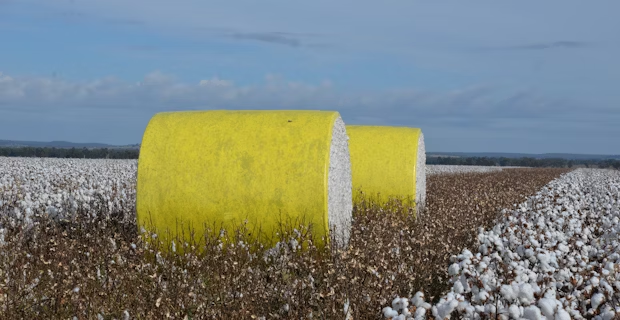This article was first published in the Australian Cotton Grower Magazine. With the Australian cotton production hit hard by a lack of water in the 2018/19 growing season, drought-proofing operations is on the minds of many growers and other members of the Australian cotton industry. The current drought is taking its toll on everyone and, according to a new report from the Climate Council, these trends of extreme weather events will only worsen in the future. With weather being the one factor we cannot influence, steps will have to be taken to mitigate the consequences instead.
So, what can growers and their service providers do to minimise the impact that prolonged extreme weather events, such as a drought, have on the way they run their operation? Agworld regional sales manager Graham Morgan is asked this question on a regular basis and he says it is worth putting some thought in this now in order to be well prepared for the next drought.
“What tends to happen in droughts is that growers, as well as suppliers, get caught by surprise when the dry conditions are starting to bite, and rain doesn’t eventuate. Where drought-proofing farms is already commonplace in the livestock industry, irrigated as well as dry land growers tend to just take conditions as they come and then start managing problems as they arise. With problems ranging from cash flow limitations to tax implications and many other factors for growers, it is imperative to be as well prepared as possible for these situations.”

In its recent report, the climate council estimates that the Murray Darling Basin, currently worth about $7 billion per year in agricultural production, will halve its irrigated output by 2050. A decrease of that magnitude, combined with an increase in variability and extreme weather events, is sure to have a profound impact on growers and the way they have to run their operations in order to remain viable.
Agronomist Rob Holmes, HMAg, Moree is also seeing an increased focus on drought mitigation strategies in his area, mostly predicated by the current drought and the impact it is having on growers and their communities.
“Drought is a natural, and unfortunately frequent part of our farming area. Farmers have many strategies to minimise the adverse effects of droughts and maximise the benefits of better year. These strategies include a well-planned crop sequence, stubble retention or zero till and tramlining. These strategies are in order to store and utilise as much moisture as possible instead of losing it to run-off and evaporation. Increasingly however I see growers, both dry land as well as irrigated, starting to explore their options in regard to minimising the impact that a prolonged drought has on the way they run their farming operation.”
“With new machinery and software solutions all geared towards gathering more data, growers have been investigating how they can use this data to improve their moisture efficiency and mitigate the impact of extreme weather events on their farming operation. Those that have farm data available from past seasons, can use this to create a more profitable cropping plan for future seasons.”

Graham Morgan adds to this: “For trials such as row-spacing and irrigation-interval, the outcome will often depend on seasonal conditions and local factors such as soil type. Growers can get different results when they replicate trial scenarios on their own farm and so, by collecting their own farm data, they can get a better understanding of which paddock is most profitable in which scenario, what the exact production costs are, how yield or quality downgrades impact their break-even point etc.”
“Different row configurations and irrigation deficits are used as dictated by irrigation-water availability; we ensure growers document their whole season in Agworld as accurately as possible. By doing so, they can leverage this knowledge in future seasons by making economically sound decisions in response to seasonal conditions.”

Got what it takes to join the Agworld team? We’re looking for talented individuals to help us deliver innovative solutions in agriculture.
Rob Holmes concludes with:” I prefer to have clients’ data stored in Agworld where I can retrieve it easily without having to trawl through spreadsheet after spreadsheet to find the data I am searching for. It also means that we are using the same data that our clients are using, which should lead to better decisions in the future.”
Agworld is all about making data available to our users in an easy to understand format, wherever they are - SVI is a great example of adding another ‘tool’ to our users’ ‘toolbox’ and enabling them to make better decisions in the field. As Cassie Turner, an agronomist with CQ Ag Services in Emerald, QLD recently told us: "I love having access to the SVI layer in Agworld. No need to use different apps or different sources of information; it’s right here where I need it in Agworld."
If you have any questions about how you can make use of the SVI layer in Agworld, please don’t hesitate to contact me on +61 8 6230 2290; I’d love to have a chat to you.
Download Article




